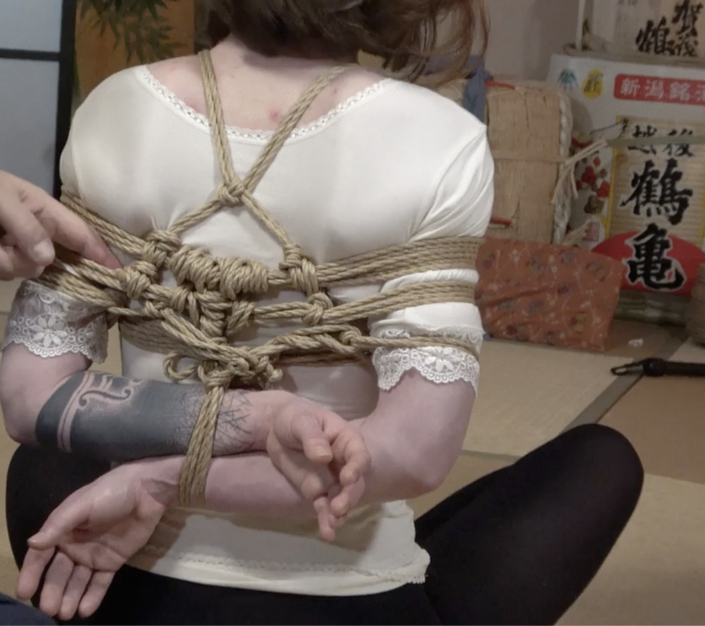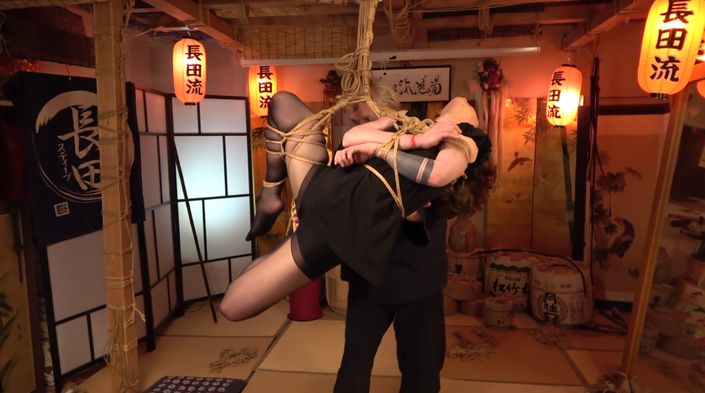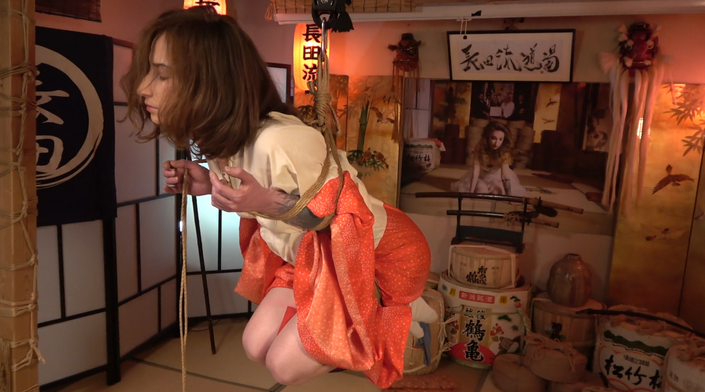
Greeting shibari
Aisatsu shibari / 挨拶縛り aka Greeting Shibari is designed to gauge the overall readiness of your rope partner for an emotional exchange and therefore for a deeply satisfying rope session.
If you approach this tie aggressively you will put your partner under compulsion with no way out. If you want to come at your partner like a freight train all you can “gauge” is how your partner can deal with your assault and how much your partner can take. Such an approach would be detrimental to a dialog type of rope session. Instead you would enforce a certain direction and your partner would need to figure out a way how to deal with it, resulting in two monologs rather than encouraging a dialog.
If you approach this tie with humility and loving kindness your partner will naturally feel inclined to reciprocate. If you politely and respectfully invite your partner to join you on a rope journey your partner will naturally feel calm, relaxed and open to engage with you. Approach this tie gently with the goal of opening the soul and the heart of your partner.
The Aisatsu Shibari series consists of four parts.
One in the front and three in the back.
The one in the front is meant to get a feel of your partner’s current emotional state while applying the various micro techniques one after the other. If you are a deep reader you will also be able to get a pretty good read of the overall personality of a rope partner you have never met before.
By consciously applying every subtle little micro technique of the tie you will get a pretty accurate idea of how your partner is feeling in this present moment. Is your partner in the mood for a soft and cuddly rope session, or is your partner eager for some semenawa?
If you are making an effort to understand and read your partner then he/she will appreciate that. As the active part in a session it is your job, your task, your duty to listen into and understand your partner. And the Aisatsu Shibari is meant to help you with that.
The three versions in the back (read photo captions below) are less emotionally intense and mainly deal with physical aspects.
In short, after applying all four techniques you will have a pretty good idea about the emotional and physical conditions of your partner. This knowledge will now help you decide how to proceed when you start tying with your partner for real.
Strappado on a Pole

Strappado
The strappado version is meant to work out the flexibility in the shoulder/elbow department. Try to understand the positioning of the shoulder blades and keep in mind how to manipulate the joints in tune with the bone structure.
.

Diamond
The diamond version helps you with finger dexterity while at the same time arriving at a pretty pattern. Depending on the flexibility of the arms you will end up with two or three diamonds. The repetitive finger action when building these diamonds will build muscle memory and will help you later with many other ties.
.

Arm box
The arm box version allows you to judge for shoulder flexibility. This time by finding out how high the forearms can go – sometimes as high as a reverse prayer position. The idea is not to force the arms into extreme and painful positions, but to get a good idea about the potential flexibility of your partner.
.
Ninth Kyu A
The four techniques of the Greeting Shibari
100+ minutes
Chef's Recommendations
Perambulate at Your Leisure to Discover More Courses and Workshops





